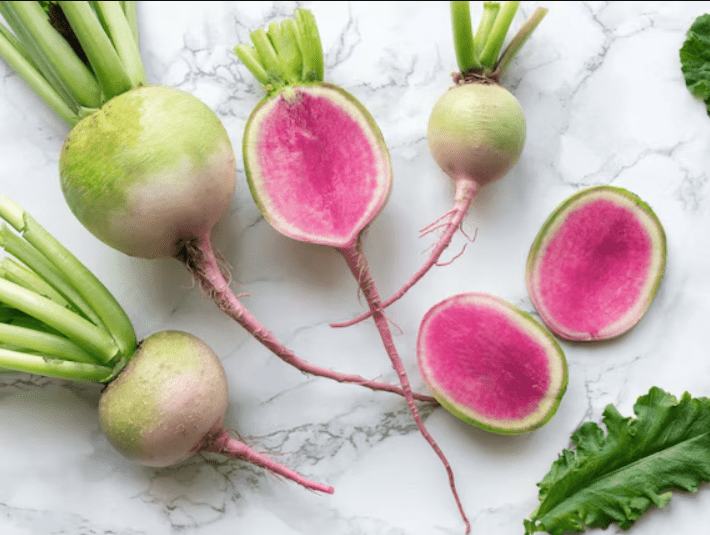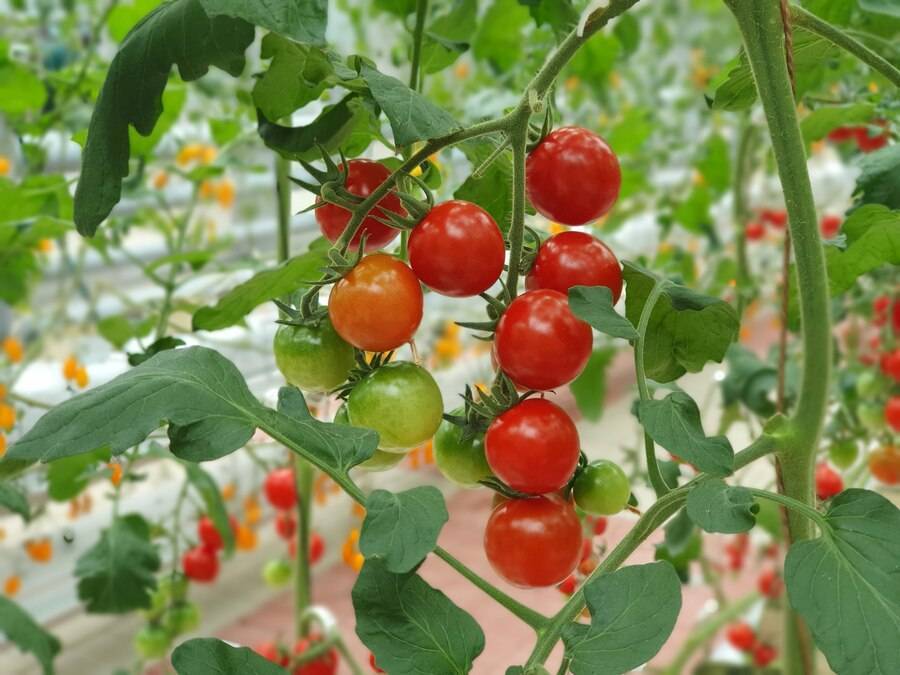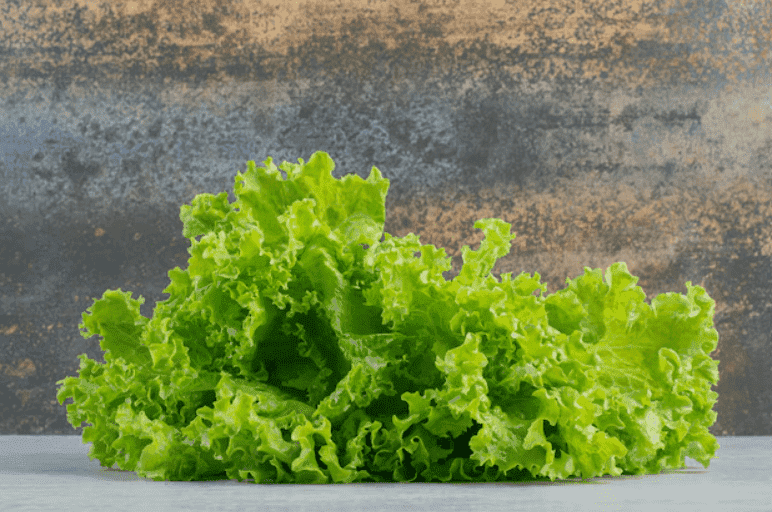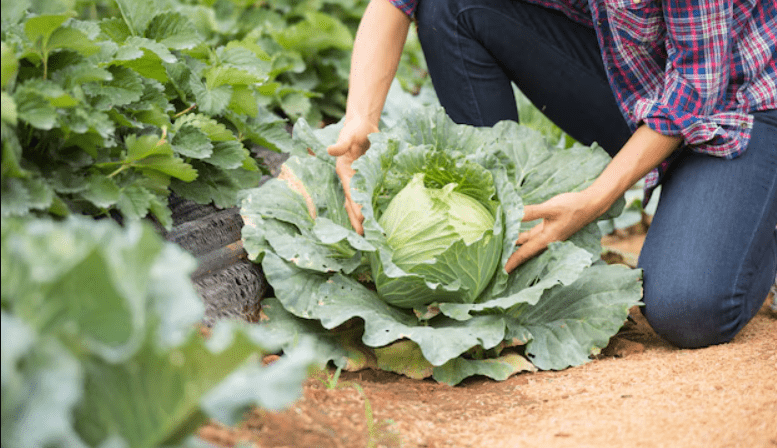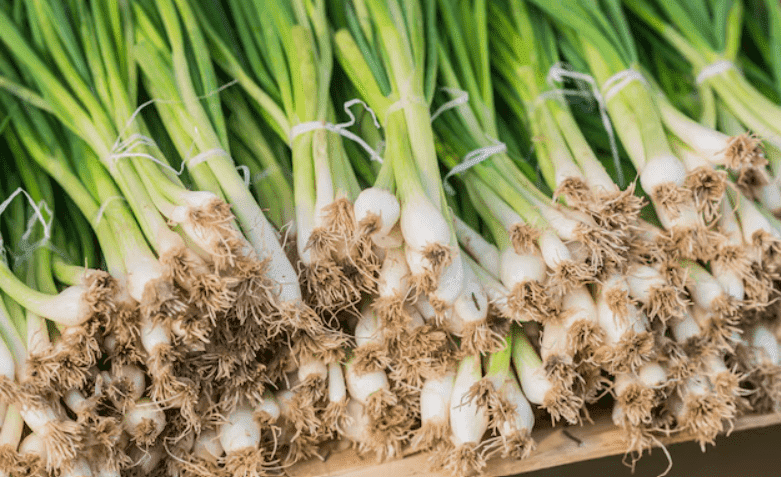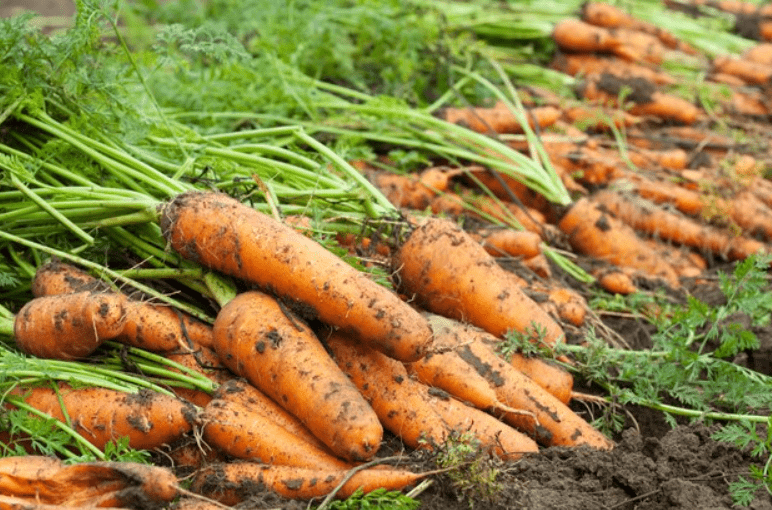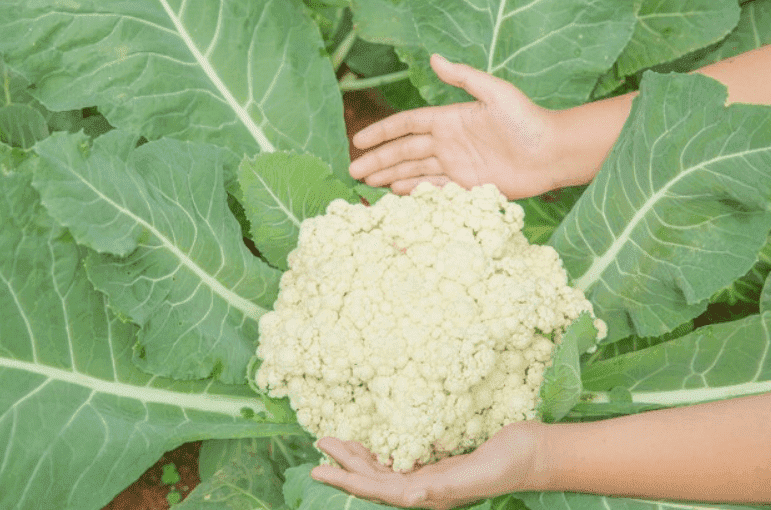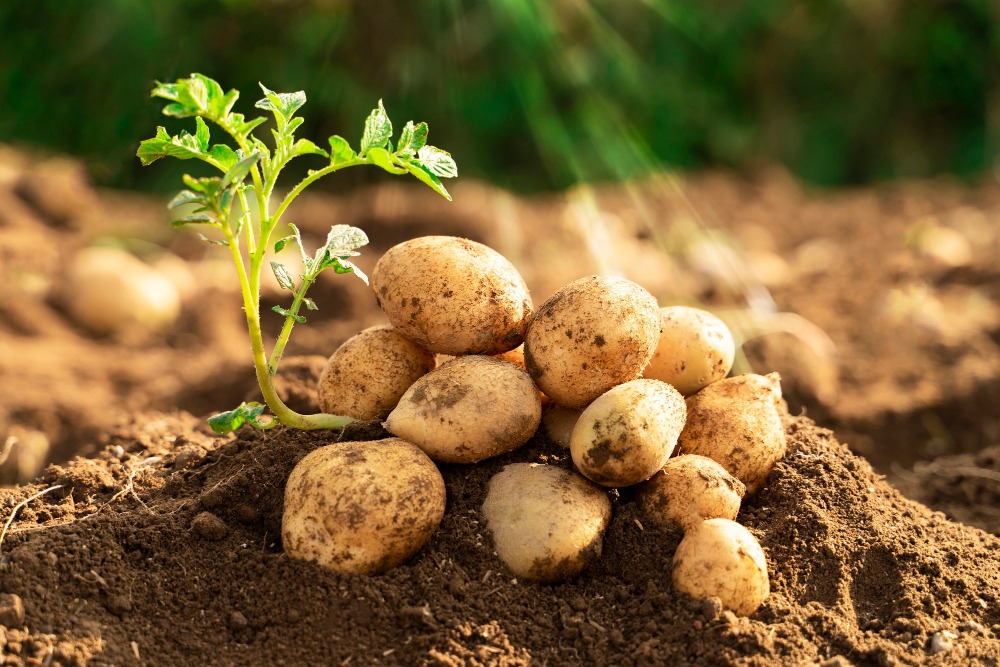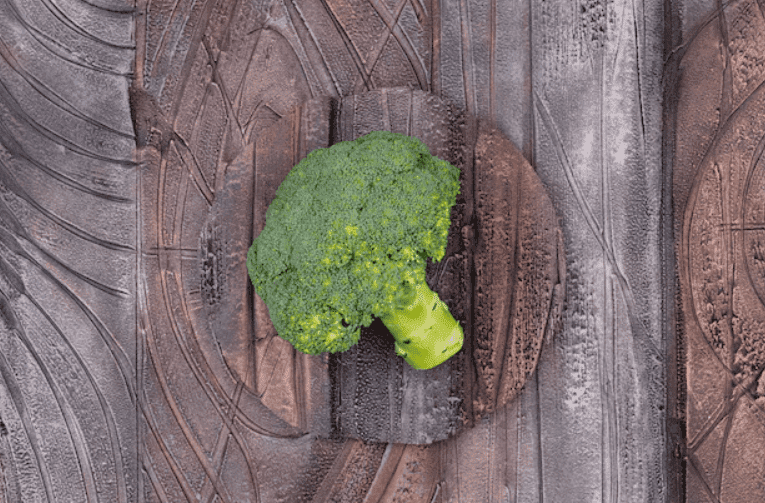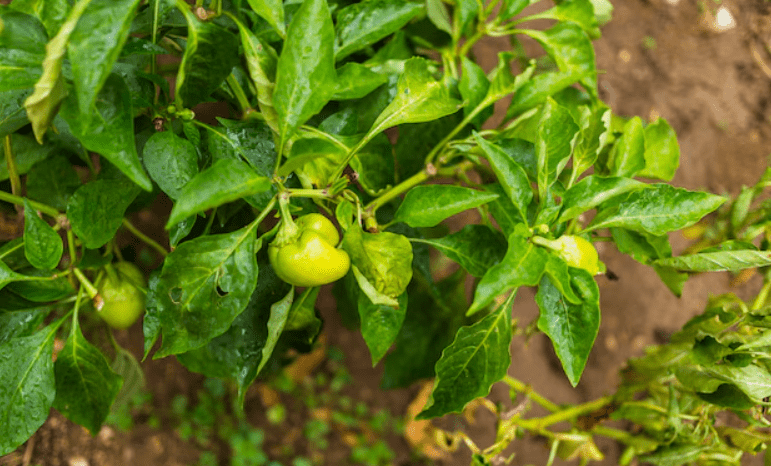Radishes are cooler-weather vegetables in different shapes, colors, and taste profiles. Among them, the watermelon radish stands out with its pale exterior, green-tinged skin, and vibrant pink, patterned center that closely resembles the inside of a watermelon. But what exactly is a watermelon radish? How does it taste, and what interesting details might convince us to plant it in our gardens? Let’s explore.
Table of Contents
ToggleWhat is a Watermelon Radish
Watermelon radishes are a vibrant and flavorful addition to any home garden. Due to their size and shape, they are often confused with turnips. They’re actually a type of daikon radish. Their name comes from their light green outer skin and striking magenta-pink core, which gives them a watermelon-like appearance.
Compared to common radishes, watermelon radishes offer a milder, slightly sweet taste that intensifies as they grow. Holding off on harvest can enhance their natural sweetness.
These radishes do best when sown in early spring and typically reach maturity in about 55 to 60 days. They’re simple to cultivate from seeds planted straight into garden soil. Some can even grow impressively large, reaching up to 5 pounds.
Growing Conditions
Watermelon radishes prefer full sunlight, although they’re still considered cool-season crops. They can tolerate a little shade, but limited sun exposure might result in smaller roots.
Like other radish varieties, they perform best in loose, well-aerated soil enriched with organic material. Mixing compost into your garden bed helps create the perfect growing environment.
Consistent watering is important, particularly during the early stages of growth, to keep the soil evenly moist. Once the radishes are fully grown, they can tolerate short periods of dryness more easily.
When to Plant
Sow watermelon radish seeds about 4 to 6 weeks ahead of your region’s final anticipated spring frost. While they can withstand light frosts, they aren’t suited for severe freezes.
For a steady supply, consider succession planting in smaller quantities every 2 to 3 weeks. In areas with milder winters, you can also plant watermelon radish seeds in late summer or early autumn for a fall harvest.
How to Plant
Plant seeds about 1/2 inch deep and space them 2 inches apart within rows that are 12 to 18 inches apart. Once the seedlings grow to 2 to 3 inches tall, thin them out to leave 4 to 5 inches of space between each plant.
Before sowing, blend a balanced organic fertilizer into the soil as the label directs. About four weeks after the seeds have sprouted, apply an additional dose of fertilizer alongside the plants to support continued growth.
Sow the seeds 1/2 inch deep and 2 in apart in rows spaced 12–18 in apart. Thin the seedlings to 4–6 in apart when they are 2–3 in tall.
Before planting, add a balanced organic fertilizer into the soil according to the package directions. Four weeks after sprouting, side-dress growing plants with more fertilizer.
Growing Tips
- Cover rows with fabric or mesh right after planting to protect young watermelon radish plants from common pests like cabbage maggots, flea beetles, and root maggots. Take off the covers once the plants begin to bloom.
- Keep an eye out for slugs, aphids, and other pests, and remove them by hand as soon as you notice them to minimize damage.
- As you learn how to grow watermelon radishes, you’ll notice that they often rise above the soil surface. Mound soil around the exposed tops to prevent them from turning green.
- Practice crop rotation by changing the planting location each year. To minimize the chance of soil-borne diseases, avoid growing watermelon radishes in the same area for at least 3 to 4 years for the best results.
Storing and Harvesting
Start harvesting watermelon radishes once they reach about 2 inches in diameter, but try to pick them before they grow beyond 4 inches for the best texture and flavor.
To harvest, gently use a garden fork to loosen the soil around each plant, then carefully pull them out by hand. Avoid yanking too hard, as this can tear the skin. Trim off the long taproots and cut back the leaves, leaving about 1 to 2 inches of stem attached.
Watermelon radishes can remain fresh in the refrigerator for 2 to 4 weeks. To store them properly, wrap them in a paper towel or tuck them in a plastic bag before storing them in the fridge drawer. This helps reduce excess moisture and keeps them crisp.
It’s best to wash radishes right before you eat them, not before storing them, as moisture can cause them to spoil more quickly. If you’d like to extend their shelf life even further, consider pickling the slices for a tangy, long-lasting treat.
Using Watermelon Radishes
Watermelon radishes are adaptable vegetables that work well in various recipes, whether served raw or cooked. Their subtle sweetness and mild taste make them a great match for many other flavors.
For a colorful, crunchy addition, slice them thin and toss them into salads. They’re also delicious on their own with just a dash of salt.
You can roast watermelon radish chunks for a tasty, visually appealing side dish or add diced pieces to soups and stews for extra flavor and texture.
Is Planting Watermelon Radishes Worth It?
Watermelon radishes are among the most distinctive veggies you can add to your garden. Their vibrant appearance will spark conversation, and their sweet, mellow flavor offers a refreshing twist on the typical spicy radish. Both kids and adults will love discovering the bright pink center hidden inside.
They’re simple to grow from seed in the spring and don’t need much maintenance. Just remember to harvest them before they get too large and start to split. If you’ve got the room for these hefty roots, watermelon radishes are well worth growing for their unique charm alone.
FAQs
What do watermelon radishes taste like?
Watermelon radishes have a mild, sweet flavor that’s much less pungent than typical radishes. As they mature, their sweetness intensifies, making them a pleasant alternative to the sharper taste of traditional varieties.
How big do watermelon radishes grow?
Watermelon radishes generally grow to about 4 inches in diameter, with some reaching up to 2 pounds in weight.
What color is the watermelon radishes on the inside?
When you cut a watermelon radish, you’ll find a vibrant magenta interior that resembles the flesh of a watermelon. This bright color contrasts beautifully with its pale green skin, creating a striking visual effect.

